

Camp Vught National Memorial
Opening hours & ticket prices.
Your ticket is a combi-ticket for a visit to Camp Vught National Memorial and Barracks 1B. Please be aware that Barracks 1B has limited opening hours; the ticket is valid for one visit to Barracks 1B during one month.
Permanent exhibition
The exhibition “Camp Vught: seven seasons and 32,000 stories” presents the history of Camp Vught through many personal stories and objects. As many as 36 different nationalities are represented in these stories.
A hand-out is available at the desk (German, Italian, French, Portuguese and Spanish) for € 3,95.
Barracks 1B is the last remaining authentic barrack of former Camp Vught. The exhibition “If walls could talk” encompasses four periods: the concentration camp (1943-1944) and the function of the site following the evacuation of the camp in September 1944.
Family visit (10+)
A family visit to the museum is suitable for children over the age of 10. Visitors aged between 10 and 12 can take the junior audio tour “Behind barbed wire”. It links up with the stories in the permanent exhibition.
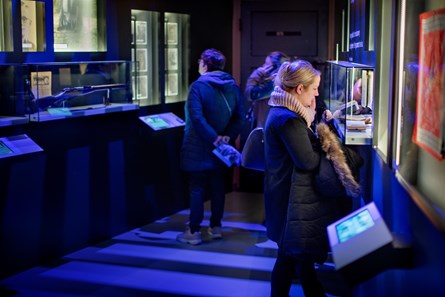
Execution site
The former execution site at Camp Vught is within walking distance of the museum, hidden in the woods. There is now a monument to the 329 men executed there. The trail is roughly 2.5 kilometres long.
Read more about the construction and history of the camp during the war.
Tours for schools
More than 30,000 schoolchildren visit the Camp Vught site every year. The tour of the former camp area is suitable for children aged 10 and over. The tour lasts 60 minutes and costs € 60. The maximum group size is 25 children; one supervisor per group. Accompanying adults pay €1.50 for a visit with audio tour. Foreign language surcharge € 10 per group. Your booking is confirmed when you receive a confirmation email.
Guided tour for adults
The guide will take your group around the former camp area (duration: 75 minutes; max. group size: 25 people). After that, you can explore the exhibition on your own. A guided tour costs €90, plus a €4.50 entrance fee per person. Groups of military personnel, surviving relatives of prisoners and veterans do not pay the entrance fee. A guided tour for groups of youngsters (including scout groups) costs €65. Combine your guided tour with tea or coffee, a cake or lunch in our museum café which has splendid views of the lunettes (old fortifications).
Prices: Tea/coffee: €2.00 Tea/coffee & Dutch apple cake: €4.75. The delicious Dutch apple cake is supplied by a bakery run by staff with special needs. Other cakes are available on request. Lunch: €9.50, two sandwiches, currant bun, coffee and tea. More substantial lunch: €14, as above plus a sausage roll (or vegetarian variant) and juice. Lunch is available from Tuesday to Saturday only, due to other catering activities at the weekend. Please reserve lunches two weeks before your visit. We can cater for a maximum of 35 people in a group deal; in the case of larger groups, please ask about the options. One option is that we can vary the times of the guided tour and refreshments to accommodate more people.
Book a tour & contact
You can fill the form below or contact Liesbeth Prijt or Jessica Gommers from Monday to Friday or call (+31) (0) 73 656 6764. Once our staff have processed your reservation, you will receive an email with a confirmation.Please inform us of any changes to the size of your group at least two working days (Monday to Friday) before your visit.
Please note that only our guides may give tours at the Camp Vught National Memorial. School visits can only be arranged by appointment. You may choose to add specific activities to your tour, such as: • renting a space for your own activity; • walking to the former execution site (without tour guide); • watching a film ("Camp Vught in the classroom" with subtitles – €25, max. 80 persons); • arranging a meeting with a guest speaker. If you would like more information about these activities and the costs, please contact us. We look forward to welcoming you.
Read more about accessibility Check the house rules and the terms and conditons for visitors . For groups: read the booking conditons . Any questions? Please mail [email protected]
Plan your journey to Camp Vught National Memorial.
Booking form groups
Deze website maakt gebruik van geanonimiseerde cookies om jouw gebruikservaring te optimaliseren en voor de analyse van onze website. Deze cookies kun je niet uitzetten. Bij het tonen en afspelen van YouTube video's worden cookies van derden geplaatst. Deze cookies van derden kun je wel uitzetten. Klik op "Akkoord" als je akkoord gaat met dit gebruik van cookies, klik op "Aanpassen" voor meer informatie en om zelf te bepalen welke cookies deze website plaatst.
- Remembrance Tour
Small Group Tour to Former Nazi concentration camp Vught WW II from Amsterdam
Join us for a half day tour to the World War II former Nazi concentration camp Vught.
Herzogenbusch concentration camp (Dutch: Kamp Vught) is located in Vught near the city of Hertogenbosch, Netherlands. The camp was first used in 1943 and held 31,000 Jewish and political prisoners.
On this small group tour, we will visit the remainders of the former Nazi concentration camp with its reconstructed watchtowers, barracks, crematorium and children’s memorial. This impressive memorial, which is centrally located on the campgrounds, lists the names and ages of the 1,269 Jewish children who were deported in June 1943. After a visit to the memorial center and museum, there will be time to walk to the execution area, located in the surrounding woods. A memorial has been erected here that displays the names of the prisoners who were executed at this site.
During this visit, there will be time for discovery, remembrance, commemoration and reflection. An audio tour is included. Our tour guide will stay with the group throughout the visit and will be able to answer your questions.
And if you are interested in submerging yourself into a full day of WWII history, please check out our full day WWII tour that combines this one with a visit to (the battle of) Arnhem area!
The tour includes:
- transportation from and to Amsterdam
- Dutch Tours guide and driver that stays with the group throughout the day
- entrance fee to the Nazi concentration camp
- cold soft drinks and a snack
This tour is not recommended for children under 10 years old.
If you are traveling by yourself we welcome you to join our tours! Please call or e-mail for availability! [email protected]
Book our small group Remembrance Tour
Testimonials.
WhatsApp us
- 0 Favorites
Camp Vught National Memorial
Camp Vught National Memorial is located on the site of the only SS concentration camp to have been established in the Netherlands, around five kilometres from the centre of ’s-Hertogenbosch.
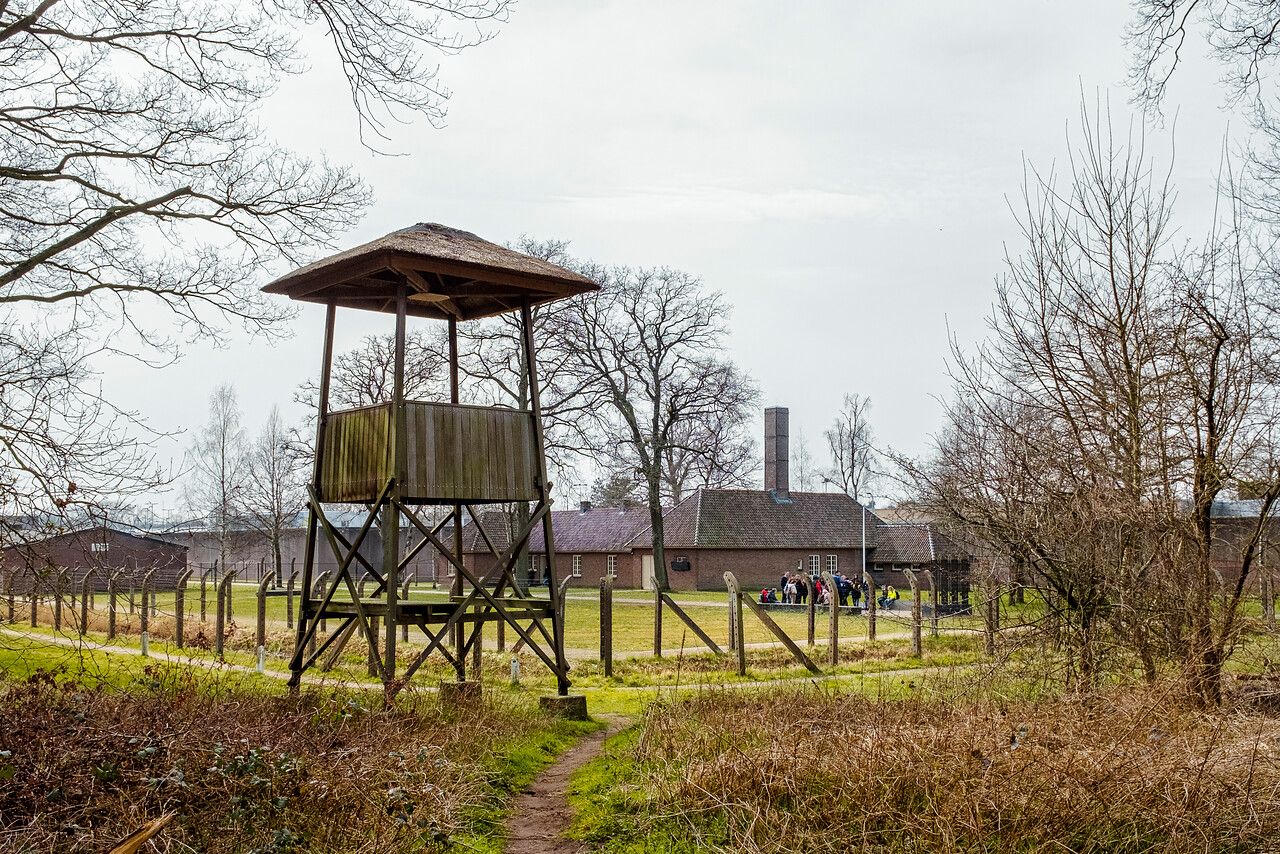
Show all 18 photos

Camp Vught National Memorial is located on the site of the only SS concentration camp to have been established in the Netherlands, around five kilometres from the centre of ’s-Hertogenbosch and on the 'Vincent van Gogh Route', the 2016 European cycle route of the year. November 2019 saw the opening of a new permanent exhibition: 'Camp Vught: seven seasons and 32,000 stories'. 'If walls could speak' The solemnity of this historical site leaves few visitors unmoved: "It's valuable to preserve this dreadful piece of history for young and old alike. It really gives visitors the opportunity to reflect". The museum offers an audio tour in Dutch, English, German and French, while group tours can be booked in a variety of languages. The site retains the original canal, barbed wire fencing and crematorium. The exhibition 'If walls could speak' is available in Dutch and English in the last remaining camp barrack in the Netherlands, Barack 1B, a little farther along Lunettenlaan. Location and accessibility Camp Vu…
Camp Vught National Memorial is located on the site of the only SS concentration camp to have been established in the Netherlands, around five kilometres from the centre of ’s-Hertogenbosch and on the 'Vincent van Gogh Route', the 2016 European cycle route of the year. November 2019 saw the opening of a new permanent exhibition: 'Camp Vught: seven seasons and 32,000 stories'. 'If walls could speak' The solemnity of this historical site leaves few visitors unmoved: "It's valuable to preserve this dreadful piece of history for young and old alike. It really gives visitors the opportunity to reflect". The museum offers an audio tour in Dutch, English, German and French, while group tours can be booked in a variety of languages. The site retains the original canal, barbed wire fencing and crematorium. The exhibition 'If walls could speak' is available in Dutch and English in the last remaining camp barrack in the Netherlands, Barack 1B, a little farther along Lunettenlaan. Location and accessibility Camp Vught National Memorial is located in the Vughtse Lunetten, a historic defence fortification in De Vughtse Heide nature reserve. The NS hiking trail provides good accessibility to visitors from ‘s-Hertogenbosch. And a twenty-minute cycle ride along the Drongelse kanaal takes you right to the heart of the most welcoming city in the Netherlands. Visit the directions on the website for other transport options such as local buses or taxis (reservations required in advance!) from ’s-Hertogenbosch central station. You can also reach the museum by car. Free on-site parking is available. Powerful and compelling The following reaction is testament to the profound effect of the museum on its visitors: "The museum tells its history in a sobering and gripping way. Objects and testimonials confront visitors with the hard reality". Or come and see for yourself why one of our visitors left the following comment on TripAdvisor: "An absolute must-see. Nothing but goosebumps as you walk around". The museum has received the title Kidsproof.
Brabant Bicycle Café Camp Vught National Memorial is an official Brabants Fietscafé ; a Brabant Bicycle Café. In these bicycle cafés, cyclists are made to feel especially welcome! You can stop by for a delicious bite to eat or a refreshing drink, and make use of facilities such as a repair kit, bicycle pump and e-bike charging station.
Click here to take a 360 tour.
This is how to reach Camp Vught National Memorial
Starting point: from your location
- Route Plan your route
- Email Send an email
- Call Call: +31 (0)73 6566764
- Website Visit the website
Read the experiences of other visitors

View the reviews of previous guests at this location.
- Payment options: PIN, Credit card
- Children Yes
- Business Yes
- Families Yes
- Young people Yes
- Students Yes
- Senior citizens Yes
- LGBTQIA+ Yes
Tips from Brabant residents
- Show all in Accommodations
- Bed & Breakfasts
- Group accommodations
- Holiday home
- Show all in Food & drinks
- Bicycle Café
- Show all in Highlights
- Points of interest
- Attractions
The link has been copied.
The link could not be copied.
- Food & drinks
More inspiration
12 north brabant local products and specialities.

The people of Brabant know how to eat and drink well. And the bountiful Brabant soil provides the most delicious tastes in the region. From authentic Trappist beers and Brabant cheese to the famous ‘ASA’ menu. Be inspired by these local products.
Discover more
8 photogenic food hotspots in North Brabant

In North Brabant, your meal becomes an experience that you will want to record. These eight photogenic food hotspots have a menu that makes you hungry and an interior that is camera-friendly.
Check all of them out
This website uses cookies
This website uses cookies (Functional, Analytical, Marketing) that are required for the website to perform as good as possible. By clicking on "I accept all cookies", you agree with the use of these cookies.

Small Group Tour to Nazi WWII Concentration Camp From Amsterdam
Visiting a Nazi concentration camp is a profound and sobering experience, one that no traveler should take lightly. A small-group tour to the Vught concentration camp from Amsterdam offers an immersive and educational journey, allowing visitors to explore the camp’s somber history with the guidance of a knowledgeable expert. Through this intimate encounter, guests can gain a deeper understanding of the horrors of the Nazi regime during World War II, honoring the memory of those who suffered and perished. While the subject matter is heavy, the tour’s thoughtful approach and limited group size create a powerful and meaningful experience that can leave a lasting impact on all who partake.
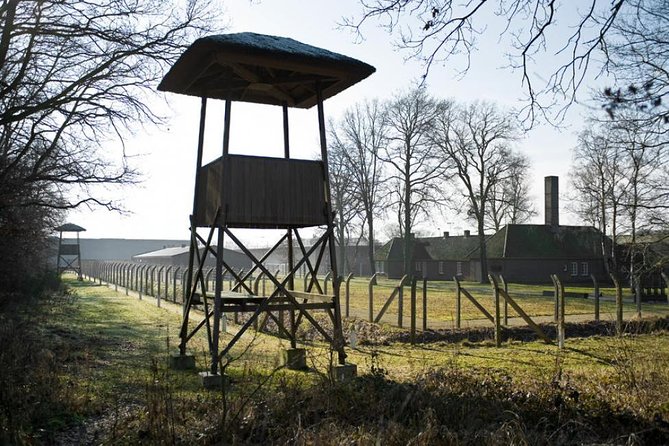
- This small group tour from Amsterdam provides access to the Vught concentration camp, a WWII Nazi internment facility that held over 31,000 prisoners.
- The tour offers a guided experience with an audio guide and group leader, allowing visitors to gain valuable insight into the camp’s tragic history.
- The limited group size of up to 16 travelers ensures a more personal and immersive experience, with complimentary beverages and snacks provided.
- The tour aims to honor the victims and educate participants about the atrocities of the Holocaust, with wheelchair and stroller accessibility for all.
- The meeting point is conveniently located behind the Amsterdam Central Train Station, making it easily accessible for travelers.
It's also worth checking out some other tours and experiences nearby.
- Amsterdam Canal Cruise With Live Guide and Onboard Bar
- Amsterdam Classic Boat Cruise With Live Guide, Drinks and Cheese
- All-Inclusive Amsterdam Canal Cruise by Captain Jack
- Anne Frank Guided Walking Tour Through Amsterdams Jewish Quarter
Overview of Vught Concentration Camp
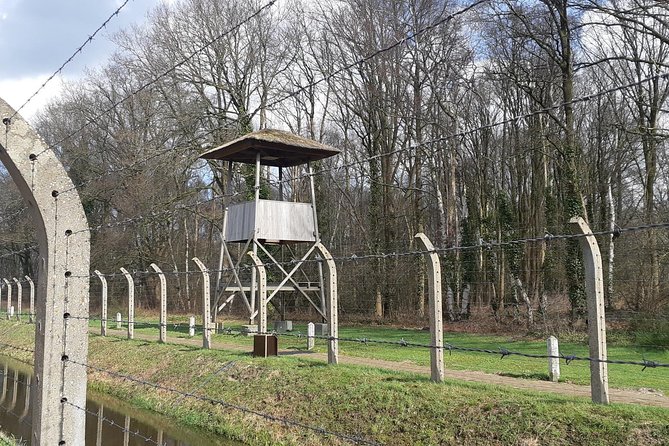
Vught concentration camp, also known as Konzentrationslager Herzogenbusch, housed over 31,000 prisoners during its operation from 1943 to 1944 as part of the Nazi’s vast network of WWII internment facilities.
Visitors can witness the barracks, crematorium , and reconstructed watchtowers that remain as reminders of this somber chapter in history. The guide provides valuable insight, helping attendees develop a deeper understanding of the camp’s role and the profound impact it had on the lives of those imprisoned there.
Though a difficult subject, the tour offers a chance to reflect on this tragic period and honor the memory of those who suffered within Vught’s walls.
Highlights of the Tour Experience
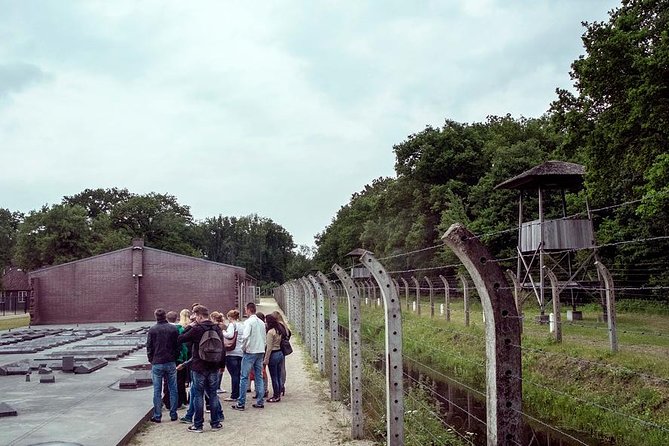
Embarking on the small-group tour , visitors gain access to an audio guide and group leader who provide invaluable insight into this somber place.
The Vught concentration camp, which imprisoned over 31,000 people during WWII, offers a firsthand look at the atrocities of the Nazi regime.
The limited group size of 8 travelers allows for a more personal experience, fostering deeper reflection on the camp’s tragic history.
Throughout the tour, visitors are provided with soft drinks and a snack, ensuring their comfort as they confront this difficult chapter.
The experience aims to honor the victims and educate guests about the horrors of the Holocaust.
Inclusions and Exclusions
The tour package includes an air-conditioned vehicle, all necessary fees and taxes, as well as complimentary beverages and a snack for participants. However, it doesn’t cover personal expenses or gratuities for the guide.
The tour’s inclusions aim to provide a comfortable and hassle-free experience for visitors:
- Soda, soft drinks, and bottled water to stay hydrated during the tour
- A small snack to keep energy levels up
- All entrance fees and taxes covered, so there are no hidden costs
- Transportation in a climate-controlled vehicle for the journey to the camp
Visitors are encouraged to bring any additional personal items they may need, as well as to consider a thoughtful tip for the guide at the end of the tour.

Meeting Point and Directions
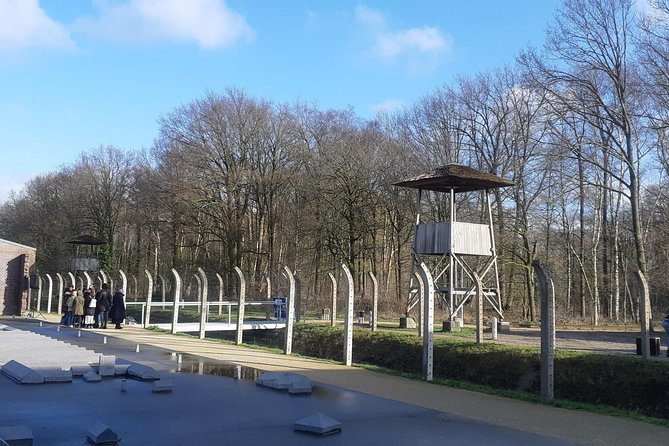
According to the details provided, the tour meeting point is located at De Ruijterkade 153, 1011 AC Amsterdam, next to the ALOHA café, which is situated behind the Central Train Station.
Travelers can reach this meeting spot by taking the IJ exit and walking approximately 300 meters.
The meeting point is conveniently located, making it easily accessible for participants.
This information ensures that tour-goers can find the starting location without difficulty, allowing the tour to commence smoothly.
The clear directions outlined in the overview will help travelers navigate to the meeting point and arrive on time for the start of the small-group tour to the Nazi WWII concentration camp Vught near Amsterdam.
Traveler Recommendations
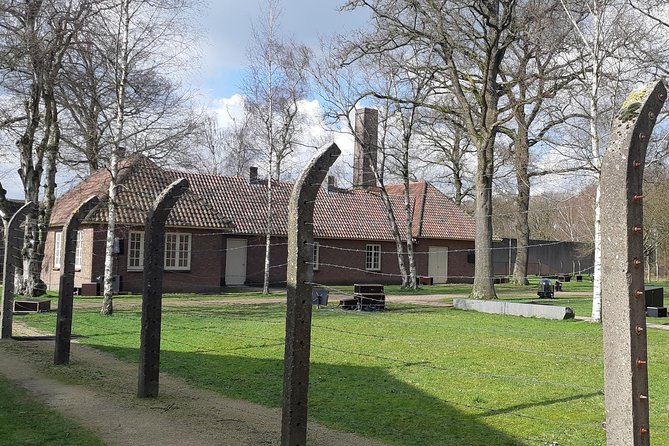
While the meeting point information ensures a smooth start to the tour, there are a few key recommendations travelers should keep in mind when embarking on this somber experience.
The tour isn’t recommended for children under 10, as the content may be disturbing.
Wheelchair and stroller users are welcome, ensuring accessibility for all.
Travelers should come prepared both mentally and physically , as the emotions evoked can be overwhelming.
Most importantly, an open and respectful mindset is crucial when visiting this historical site of tragedy and remembrance.
Accessibility Details
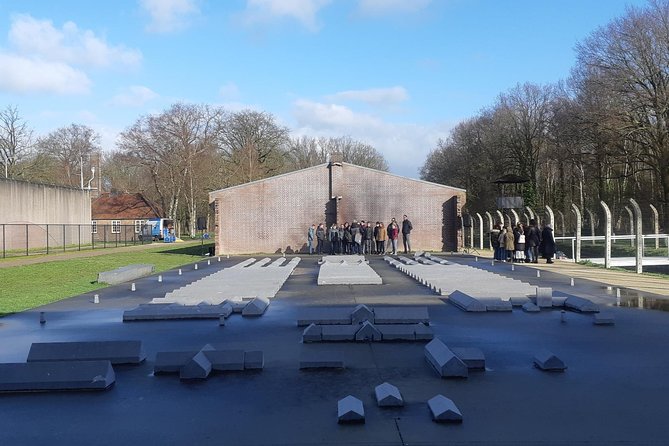
This tour is wheelchair and stroller accessible , ensuring all travelers can participate in the somber experience. The venue has been adapted to accommodate those with mobility challenges , allowing everyone to explore the camp’s history firsthand.
The small group size of up to 16 travelers further enhances the personal nature of the tour , fostering a more intimate and reflective atmosphere. However, the tour isn’t recommended for children under 10 years old, as the subject matter may be too heavy and emotionally taxing for younger individuals.
Booking and Confirmation
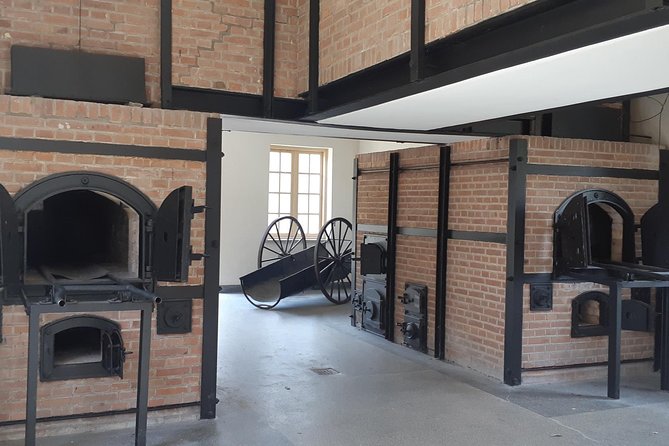
Confirmation for the small group tour to the Nazi WWII concentration camp Vught is provided at the time of booking, ensuring travelers have all the necessary details prior to their visit.
The tour is accessible to wheelchair users and strollers , making it inclusive for all. However, the tour isn’t recommended for children under 10 years old due to the somber and sensitive nature of the subject matter.
The tour group is limited to a maximum of 16 travelers , creating a more personal and intimate experience.
Travelers can expect an air-conditioned vehicle , fees and taxes, as well as complimentary soft drinks and a snack during the tour.
The meeting point is conveniently located near the Amsterdam Central Train Station , ensuring easy access for participants.
Group Size and Duration
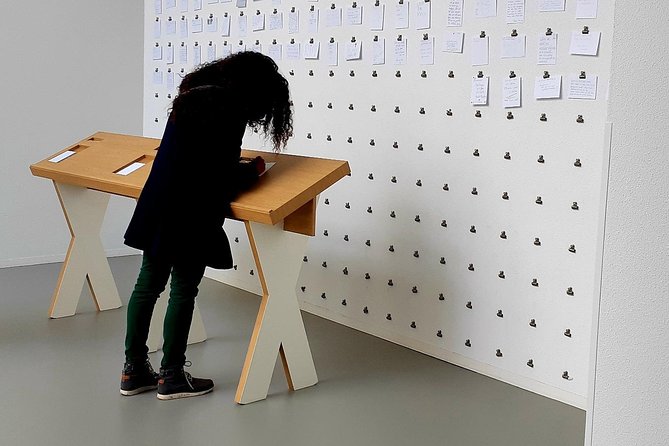
The small-group tour to the Nazi WWII concentration camp Vught is limited to a maximum of 16 travelers, ensuring a more intimate and personalized experience for participants. This cap on group size allows the guide to provide valuable insight and answer questions more effectively, fostering a deeper understanding of this somber historical site. The tour duration is approximately 3 hours, giving visitors ample time to explore the barracks, crematorium, and reconstructed watchtowers while gaining a profound appreciation for the gravity of the events that took place here. The following table outlines the key details regarding group size and duration:
Here's a few more nearby tours and experiences we think you'll like.
- Amsterdam Open Boat Canal Cruise With Onboard Bar
- Day Trip to Zaanse Schans, Edam, Volendam and Marken From Amsterdam
- Amsterdam Evening Canal Cruise With Live Guide and Onboard Bar
- Amsterdam Canal Cruise in Open Boat With Local Skipper-Guide
- Guided Bike Tour of Amsterdams Highlights and Hidden Gems
Frequently Asked Questions
What type of transportation is used for the tour.
The tour uses air-conditioned vehicles to transport guests to the historic site. This allows for a comfortable journey while ensuring participants can focus on the educational experience at the concentration camp.
Are Photography and Video Recording Allowed During the Tour?
Photography and video recording are generally allowed during the tour, though visitors are advised to be respectful and sensitive when capturing images of this somber historical site. Specific policies may vary, so it’s best to check with the tour operator.
Is the Tour Suitable for Individuals With Limited Mobility?
The tour is wheelchair and stroller accessible, indicating it’s suitable for individuals with limited mobility. However, some of the historic sites may have uneven terrain, so those with concerns should check with the tour operator beforehand.
What Is the Expected Duration of the Tour?
The tour typically lasts approximately 4 to 5 hours. This allows ample time to explore the historic site thoroughly and gain valuable insights from the knowledgeable guide, within the constraints of a small group setting.
Are There Any Age Restrictions for Participation?
The tour is not recommended for children under 10 years old, indicating there may be age restrictions. Visitors should consider the sensitive nature of the content before bringing younger participants.
Not for you? Here's more of our most recent tour reviews happening neaby
- Dinner Canal Cruise Amsterdam: 3-Course With Aperitif
- Amsterdam BonTon: Gentlemans Club Educational Tour
- Royal Experience – Private Tour in Worlds Oldest Diamond Polishing Factory
- Amsterdam Private Tour: Highlights & Hidden Gems by Bike or Foot
- Amsterdam Small-Group Evening Canal Cruise Including Wine, Craft Beer, Cheese
- Zaanse Schans 3-Hour Private Tour From Central Amsterdam, Airport or Port
- Private Amsterdam Red Light District and Food Tour
- Dutch Countryside From Amsterdam: Volendam, Edam, Zaanse Schans
- Keukenhof Ticket With Roundtrip Shuttle Bus From Amsterdam
- A Unique Experience! Semi Private Cruise. Authentic Stylish Boat! Book Leemstar!
- Private 1-hour Amsterdam Canal Tour
- Countryside Electric Bike Tour: Zaanse Schans & Zaandam
- Amsterdam Private Boat Tour With Unlimited Drinks
- Amsterdam Airport Private Arrival Transfer
- Humans of Amsterdam – Small Group Walking Tour
The Vught concentration camp tour from Amsterdam offers a sobering yet essential experience . Visitors can explore the camp’s haunting remnants and learn from a knowledgeable guide, gaining a deeper understanding of the horrors of the Nazi regime.
The small group size and complimentary amenities ensure a personal and comfortable experience , allowing participants to reflect on the past and honor the victims. This tour provides a valuable opportunity to confront a dark chapter in history.
Similar Posts

Kayak, Whale Watch And Snorkel At Turtle Town

Milan: City Highlights Guided Bike Tour
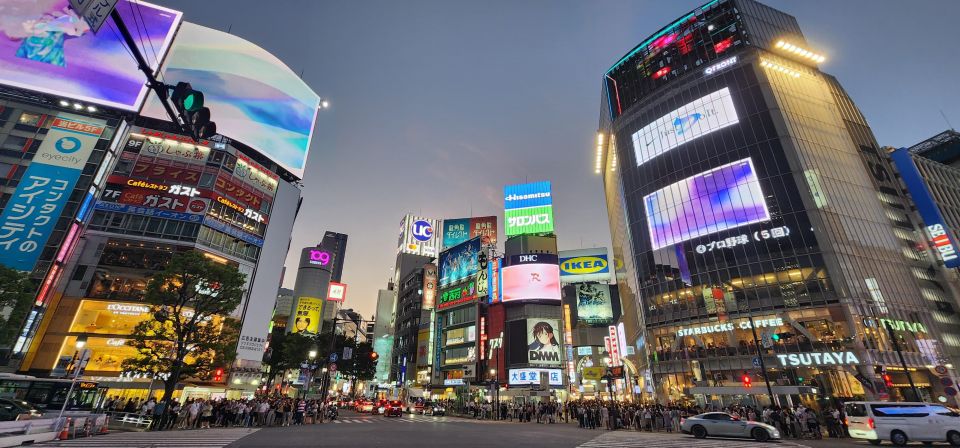
Real Tokyo in One Day With a Local
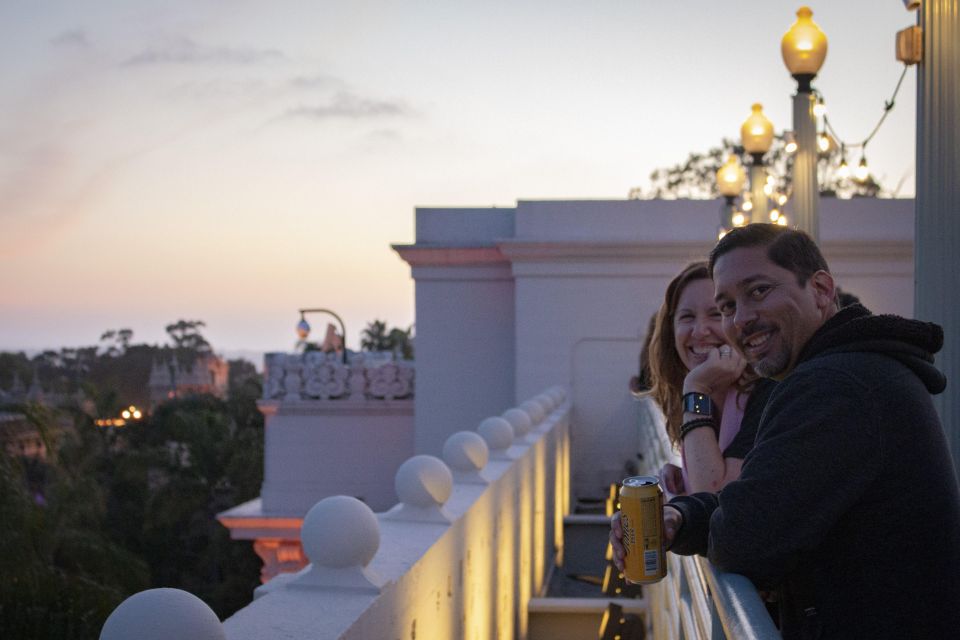
San Diego: Nighttime at the San Diego Natural History Museum

Monterey: Private Surfing Lessons
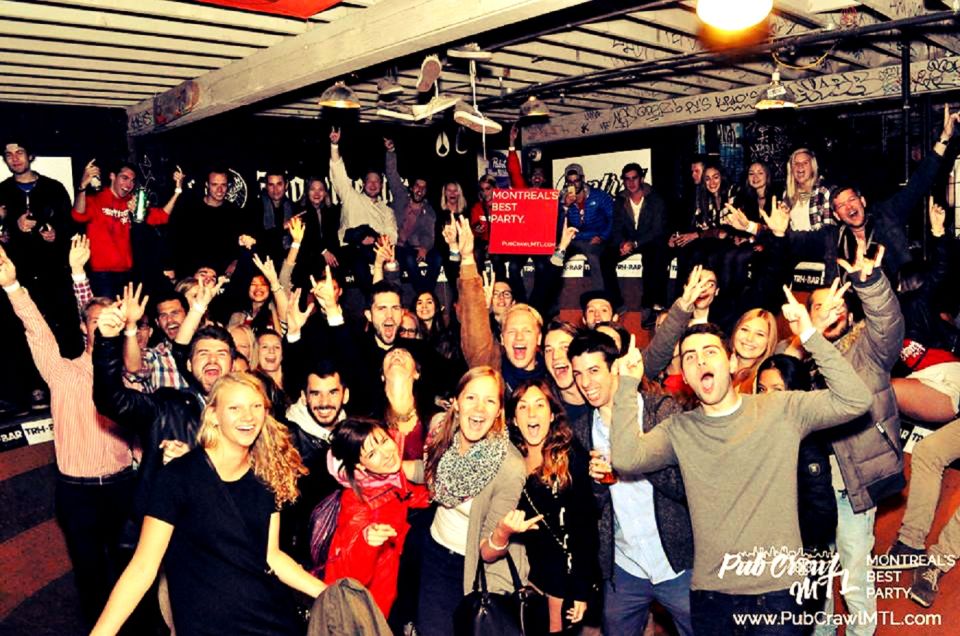
Montreal: Guided Bar Crawl With Free Shots and Club Entry

Search the Holocaust Encyclopedia
- Animated Map
- Discussion Question
- Media Essay
- Oral History
- Timeline Event
- Clear Selections

Herzogenbusch Main Camp (Vught)
Between 1933 and 1945, Nazi Germany and its allies established more than 44,000 camps and other incarceration sites (including ghettos). The perpetrators used these locations for a range of purposes, including forced labor, detention of people deemed to be "enemies of the state," and mass murder. Millions of people suffered and died or were killed. Among them was the Herzogenbusch main camp (also known as Vught).
In the summer of 1942, only a few weeks after the first deportation train had left the Jewish transit camp (Judendurchgangslager) at Westerbork for Auschwitz on June 15, Höherer-SS und Polizeiführer (HSSPF) Hanns Albin Rauter, in consultation with Reichskommissar Arthur Seyss-Inquart, decided to start construction of a new camp called Herzogenbusch (’s-Hertogenbosch). Because of its proximity to the municipality of Vught, the Dutch called it Vught.
The most probable reasons for this decision have to be found in Rauter’s concerns about the tempo and effectiveness of the deportation of the Jews from Westerbork—in principle, about 120,000 people eventually were deported—and the obvious malfunctioning of the already existing camp at Amersfoort, which proved to be too small and which had a notorious reputation for its harsh regime.
In the beginning of December 1942, Rauter’s superior, Reichsführer-SS Heinrich Himmler , following Rauter’s regular updates, ordered that Herzogenbusch had to be considered an “official” concentration camp, in other words, a camp under direct supervision of the Berlin offices of the SS-Business Administration Main Office (WVHA). He did not want it to be a police transit or extended police camp (Polizeiliches Durchgangslager or Erweitertes Polizeilager) like Amersfoort, or a Judendurchgangslager like Westerbork. To that end, Himmler charged WVHA head Oswald Pohl to have talks with Rauter, which would take place in the same month. 1 Footnote 1 1 For the time being (and until May 1944), Rauter did not obtain the final responsibility over the camp—by definition in the hands of the WVHA—but was responsible for its supervision (Dienstaufsicht). This made him responsible for the daily routine of the camp.
The camp itself, formally set up on January 5, 1943, 2 Footnote 2 2 started to function on January 13, 1943, with the arrival of about 250 male prisoners (including Jews) from the Amersfoort camp. A second transport—some 2,000 prisoners from Amersfoort—arrived three days later. The same day, about 450 Jews arrived from Amsterdam (mainly “armament Jews,” or Rustungsjuden).
Their former guards, all members of the Wachbatallion Nordwest, accompanied the Amersfoort prisoners. Most of the prisoners were in terrible shape. The prisoners’ first task was to build the barracks, which was, given the shape they were in, a very strenuous job. Moreover, hardly any facilities were provided in the beginning. The food provided was poor, and drinkable water was rare. It is not surprising at all that by April 1943 over 200 prisoners had perished. In the end, the camp took up 300,000 square meters (359,000 square yards) and consisted of 36 barracks for living, sleeping, and working. The complete construction of the site was financed from confiscated Jewish capital. The camp had a crematorium but not a gas chamber.
Herzogenbusch became known as one of the few concentration camps located outside the Reich territory ( Reichsgebiet ). Apart from the control issue, this status had some other implications. The camp was made up of several largely independent sections for different kinds of prisoners: the “protective custody” camp ( Schutzhaftlager , including the women’s concentration camp, or Frauenkonzentrationslager ); the Judendurchgangslager; the students’ camp ( Studentenlager ); the hostage camp ( Geisellager ); a Polizeiliches Durchgangslager; and a Security Service camp (Sicherheitsdienst-Lager, or SDLager).
Most of these sections did not exist through the full period when Herzogenbusch was active. Actually, some of them operated only for a couple of months. In these six sections, an estimated 30,000 people were imprisoned.
The main camp, the Schutzhaftlager, was in operation throughout Herzogenbusch’s existence. About 12,000 people (11,000 men and 1,000 women) were quartered in this camp for periods ranging from less than a month to more than a year. In principle, Schutzhaft (protective custody in order to protect state security) could be imposed on all kinds of prisoners: Jews (i.e., those who violated one of the anti- Jewish measures; the so-called Jews qualified for punishment, or straffällige Juden ); political prisoners; Jehovah’s Witnesses; “antisocials” (black marketeers, thieves, and others arrested for economic reasons); and criminals (some of them Kapos, coming from Germany). In the Schutzhaftlager, people imprisoned for purely political reasons made up only a minority. About 1,350 male prisoners came from abroad, mostly from Belgium and, to a lesser extent, from France. From May 1943 on, women were imprisoned in a separate barracks, called the Frauenkonzentrationslager.
About 60 percent of the prisoners were released; the rest were transported to different concentration camps in Germany. Worth mentioning are the transport of about 90 prisoners, including some very well known resistance fighters, to the concentration camp Natzweiler at the beginning of July 1943 and the transport of about 800 prisoners to Dachau in May 1944.
The Judendurchgangslager opened on January 16, 1943. In the camouflaged language of the Germans it was at that time “appropriately” called the Jewish collection camp ( Judenauffanglager ), suggesting the possibility of a longer stay than in Westerbork, as a Judendurchgangslager. About two months afterward, however, it was renamed according to its basic function. The first group of prisoners sent to the Judenauffanglager was about 450 Jews from Amsterdam. Because their work (with diamonds and textiles) was important for German interests, they believed themselves protected against deportation and thus remained under the illusion that they would stay in the camp. In April and May, thousands more people would arrive, mostly Dutch provincial Jews, or mediene . In May 1943, the prisoner population reached its maximum of 9,000 people.
Like the other prisoners, the Jews were put to work in different internal and external detachments (Innen-und Aussenkommandos). However, apart from the usual harassment, working conditions for them were much harder. This explains why they tried to get assigned to the Philips-Kommando, where life remained relatively acceptable because of the protection of the Philips company management. Even more important, they hoped that this protection would safeguard them against deportation. It did not stop them from being transported, but actually did protect them during their deportation to Auschwitz. After their registration there, almost all the prisoners of this so-called Philips-Transport were transferred to the Gross-Rosen Aussenkommando Langenbielau [aka Reichenbach], where they had to work in a Deutsche Telefunken factory. About one-third of the Philips-Transport prisoners survived.
In all, about 12,000 people—men, women, and children—were imprisoned in Herzogenbusch, all of whom were eventually deported to Sobibor and Auschwitz. Usually, the transports to Poland went through Westerbork. By the beginning of October 1943, this was the fate of more than 10,000 people. Two transports, on November 15, 1943, and June 3, 1944, went straight to Auschwitz. After the last, the above-mentioned Philips-Transport, the camp was closed.
The Studentenlager existed only in February and March 1943. It came into being because of the attempts by the resistance on the lives of high-placed Dutch Nazis. Investigations of the German police indicated that students and people from better-off circles took part in these actions. In reprisal, about 600 students and 1,200 sons of upper- class families ( Plutokraten-Söhnchen ) were arrested at the beginning of February and transferred to Herzogenbusch. After a couple of weeks, almost all of them were released. A small group of students, however, were transported to Germany for forced labor.
In February 1943, the Geisellager was set up. It remained active until the larger camp was dissolved. A few hundred hostages were locked up, generally for not longer than a couple of months. Two groups existed: people imprisoned in reprisal for certain actions of the re sis tance ( Strafgeiseln ) and family members of resistance fi ghters or other people wanted by the German police ( Sippengeiseln ). The second group did not enter the camp before October 1943. The women and children stayed in the Frauenkonzentrationslager.
In August 1943, as a result of deportations from the Judendurchgangslager, space became vacant for a new camp: the Polizeiliches Durchgangslager, which thus mirrored the original function of the Amersfoort camp. The immediate cause for this change was the massive overflow of prisoners under investigation ( Untersuchungshäftlinge ), whose number was far too large to be put up in the prisons of the German police. In total, about 2,000 men and 300 women were imprisoned in this camp.
A special group of Untersuchungshaftlinge consisted of about 1,500 men who, at the time, were imprisoned in the major political prison in the Netherlands, the “Oranjehotel” in Scheveningen. This group was transported to Herzogenbusch in June 1944, because of the Allied invasion in Normandy, and was placed in a special camp, the SD- Lager. Most of the prisoners were considered to be important enough for the Germans that they were put in the so-called Bunker, the camp prison. People from this group of prisoners were executed in August and September 1944.
Like all the other concentration camps, Herzogenbusch is to be considered as a camp complex, that is, a main camp ( Hauptlager ) with internal sections and several external detachments or subcamps , some of them located in the immediate vicinity of the main camp, others at a distance of over 96 kilometers (60 miles). In general, it can be stated that because of the food supply and working conditions, life in the Hauptlager was less difficult than in the subcamps. On the other hand, escape from these subcamps appeared to be easier than from the main camp.
Four different kinds of detachments or subcamps can be distinguished:
- Detachments where prisoners constructed and repaired airfields (Arnheim, Eindhoven, GilzeRijen [aka Breda], Leeuwarden, and Venlo);
- Detachments where prisoners worked on coastal defenses (Moerdijk and Roosendaal);
- Detachments where prisoners performed administrativework on behalf of the Befehlshaber der Sicherheitspolizei und des SD (’s-Gravenhage, Haaren, and St. Michielsgestel);
- One detachment where prisoners were deployed for industrial labor (Herzogenbusch).
The camp leadership and part of the guard staff were recruited from people who had already worked in other camps, notably at Sachsenhausen and Mauthausen. German camp inmates were transferred with them, in order to be prominently placed as Kapos in the prisoner hierarchy.
The first camp commandant was SS-Hauptsturmfuhrer Karl Walter Chmielewski, who previously served in Sachsenhausen. Although his conspicuously rude behavior initially did not seem to have raised Rauter’s objections, he was sacked in October 1943 because of misconduct (and even sentenced by an SS court in Berlin to 15 years’ imprisonment).
His replacement was SS-Hauptsturmfuhrer Adam Grunewald, who worked previously in Dachau and Sachsenhausen. Under his regime, a punishment company ( Strafkompanie ) was set up; partly because of this, the practice of beating up prisoners increased. Although the sources do not indicate tensions between Grunewald and Rauter, the second commandant was arrested, together with his adjutant, in January 1944, because of his responsibility for the so-called Bunker tragedy ( Bunkerdrama ). This incident took place on the night of January 15–16, 1944. A German female prisoner betrayed some of her fellow prisoners, as a result of which she was punished by some of them. Interrogated by the commandant, no one reported who was responsible for this. Consequently, 74 women were collectively punished by putting them in one cell in the bunker for 14 hours; 10 women did not survive. Grunewald was arrested and sentenced by an SS court in the Netherlands to three and a half years’ imprisonment.
The dismissal of two camp commandants, a responsibility usually reserved for the WVHA, led to a conflict between Pohl and Rauter. Pohl was clearly disappointed with, in his eyes, the lack of appropriate action taken by his Berlin superiors. Pohl thereupon requested Himmler to take Herzogenbusch away from the WVHA and to charge Rauter with final responsibility for the camp. Rauter refused, claiming that the staff at his disposal was inadequate for this transfer. 3 Footnote 3 3
Grunewald’s successor was SS- Sturmbannfuhrer Hans Huttig, whose formative career experience came in Natzweiler. He appears not to have come into conflict with Rauter. Although certainly not as tough as his predecessors, Huttig was said to have exerted power from behind his desk. Among other things, he was responsible for the massive shootings of prisoners in August and September 1944 and for the evacuation transports afterward.
Because of the advance of the Allied forces through France and Belgium, the prisoners of the Schutzhaftlager, the Polizeiliches Durchgangslager, the SD- Lager, and the Frauenkonzentrationslager were transported, on September 5 and 6, 1944, to camps in Germany. About 2,900 men went to Sachsenhausen, while about 650 women were sent to Ravensbruck. The remaining prisoners, all hostages, were set free or transferred to the Amersfoort camp. The Herzogenbusch camp in fact ceased to exist. Afterward, the Wehrmacht took over the facility and used it as a prisoner-of-war (POW) camp before handing it over to the Dutch Red Cross. The camp premises were liberated on October 26, 1944.
In the late 1960s, a survey, by no means representative, was conducted of the inhabitants of the municipality of Vught, aged around 65 years, concerning their state of knowledge of the neighboring camp. People had to answer questions about its function, the number and types of prisoners, personal contacts with the guards or prisoners, and so on. The general conclusion of the survey was that the local population had a basic knowledge of the camp and that the people of Vught were apparently involved in the fate of the prisoners. People claimed to have supplied illegal food and smuggled in notes.
Two women stood out in the neighborhood for their efforts to get to know the names of the prisoners, in order to pass this information to the prisoners’ family members. In this way they clearly facilitated the sending of food parcels, which were of course of great help and comfort for the prisoners. From May 1943 on, the supply of food parcels was taken over by the Dutch Red Cross.
Two of the three commandants were tried after the war, but not by Dutch courts. In 1961, a German court sentenced Chmielewski to life imprisonment. A French court gave Huttig the same punishment, but he was released in 1956. Grunewald was never tried; he died in combat in 1945 in Hungary. Herzogenbusch was a transit camp; people were not supposed to stay in it for a long time. For Jews in particular, but also for po liti cal prisoners, the regime intended to send them to other destinations.
Imprisonment in Herzogenbusch distinguished itself not only in quantitative but also in qualitative terms. It is important to note that Herzogenbusch was deliberately designed by the Reich Security Main Office (RSHA) as a Level ( Stufe ) I and II camp, in terms of the severity of its regime. This level implied, among other things, that the non-Jewish prisoners were permitted (censored) correspondence and the receipt of food parcels.
For political reasons—the Dutch had to be won over in the battle of the Germanic peoples—it was of great importance to Himmler and Rauter to make Herzogenbusch a “perfect” camp. Amersfoort got an extremely negative reputation, and the scarce reports about people imprisoned in camps abroad, notably in Germany, suggested even worse conditions. A few days before Himmler’s visit to Herzogenbusch (on February 3, 1944), Rauter addressed an audience of leading SS officials. In this speech, about the specificc qualities of the SS, he did not refrain from calling the camp “an exemplary SS operation” ( Musterbetrieb der SS ). 4 Footnote 4 4
Rauter was very keen on maintaining this so-called high level quality and is said to have inspected the site three or four times. The treatment of the prisoners would be, as Rauter put it in his trial after the war, “severe, but fair” ( streng, aber gerecht ).
On a theoretical level, Rauter’s last statement can be qualified as highly contradictory. Nevertheless, some examples illustrate what he tried to bring forward in his defense. Hygienic conditions were poor, most notably in the Judendurchgangslager, suggesting that the physical condition of these prisoners was not a matter of concern for the camp leadership. Nevertheless, a fairly well equipped hospital, run by imprisoned doctors, functioned from July 1943 on. The quality of this hospital was incomparably better than the ones in other concentration camps.
Moreover, the regime in Herzogenbusch obviously did not show itself as cruel as was the case elsewhere. To some extent, the camp leadership kept the violent behavior of the Kapos in check and did not punish escapees who were caught afterward with hanging. About 8,000 people, more than a quarter of the total number of prisoners, were released.
However, these examples are not convincing enough for the acceptance of Rauter’s statement. Although it can well be argued that the Herzogenbusch regime did not match the level of cruelty of the other concentration camps, this does not take away from the camp’s notorious record, notably during the first half-year of its existence. A substantial food shortage, the prisoners’ poor condition, hard working conditions, and systematic battering of a certain group of Jewish inmates caused the death of 400 prisoners. At some points, the camp showed an even more deadly face. For example, in September and October 1943, 27 Belgian resistance fighters, sentenced to death in Belgium, were hanged outside the camp, and in the last two months of its existence, about 450 political prisoners were shot.
It was not before 1978 that scholarly attention was publicly paid to the camp. At that time, Louis de Jong, the former NIOD director who published a 14- volume series about the general history of the Kingdom of the Netherlands in World War II, devoted one of his volumes completely to the Nazi prisons and camps. In this publication some 70 pages are dedicated to Herzogenbusch. See his Het Koninkrijk der Nederlanden in de Tweede Wereldoorlog, vol. 8 (’s-Gravenhage, 1978). After the publication of de Jong, it took another de cade before Coenraad Stuldreher, a former NIOD staff member, published a general article, “Deutsche Konzentrationslager in den Niederlanden: Amersfoort, Westerbork, Herzogenbusch,” DaHe 5 (1989):141–173, the first publication not in the Dutch language. Later he enlarged this article into “Das Konzentrationslager Herzogenbusch—Ein ‘Musterbetrieb der SS?’ ” in Die nationalsozialistischen Konzentrationslager—Entwicklung und Struktur , ed. Ulrich Herbert, Karin Orth, and Christoph Dieckmann (Gottingen, 1998), 1: 327–348. Apart from these general publications, the last decade has witnessed books published with attention to special features of the camp: Example, on the Jewish child prisoners, Janneke de Moei, Joodse kinderen in het kamp Vught (Vught, 1999); on the Bunkerdrama, Hans Olink, Vrouwen van Vught: Een nacht in een concentratiekamp (Amsterdam, 1995); and on the Philips- Kommando, P.W. Klein and Justus van de Kamp, Het Philips- Kommando in Kamp Vught (Amsterdam, 2003). See also Tineke Wibaut- Guilonard and Ed Mager, Kamp Vught 1943–1944: Eindpunt . . . of tussenstation (Amsterdam, 1994). Information about the opening and closing dates of the main camp and subcamps, the type of prisoners, and prisoner labor can be found in the ITS, Verzeichnis der Haftstätten unter dem Reichsführer- SS (1933–1945) , 2 vols. (Arolsen, 1979), 1:154–157.
Because Herzogenbusch was not liberated by Allied forces—it was evacuated before their arrival—its prisoners were not in the position to get hold of camp records and take them home. On the contrary, testimonies clearly indicate that members of the guard force started to destroy the archives shortly before the final evacuation of the prisoners. Fortunately, not everything went into the flames. Immediately after the liberation in May 1945, RIOD (later NIOD) was founded and started to collect documents about the occupation, among them of course documents concerning the different camps in the Netherlands. Until the present day, the NIOD collection of Herzogenbusch documents, although fragmentary, is to be considered the main source for serious research into the history of the camp complex. Through the decades, the original collection has been enriched with various reports of former prisoners and other documents. As far as the archival situation is concerned, a serious drawback is the fact that none of the three camp commandants was tried in the Netherlands. Consequently, their penal records are absent. Grunewald died in action. Chmielewski and Huttig were tried outside the Netherlands. The only penal records are available for minor perpetrators. They are found in the NAN. The only penal record of a leading personality is Rauter’s trial. Because of the trial’s importance, its complete text was published in 1952. Portions of Rauter’s correspondence with Himmler and Pohl are to be found in the collection of the former BDC (later BADH) and published by former NIOD staff member N.K.C.A. in’t Veld, ed., De SS en Nederland (’s Gravenhage, 1979). The following collections in NIOD contain information about this camp: Coll. 77- 85, HSSPF; Coll. 210, BDC; Coll. 250b (Gevangenissen en Concentratiekampen; algemene verslagen); Coll. 250g (Vught I); Coll. 250gg (Vught II). Until 1978, only memoirs of former prisoners, usually of a highly personal character, had been published. Although informative, these publications cannot serve as a solid basis for scholarly research, as they are devoid of fact- checking or source references. Furthermore, some attention from the (mostly local) press has to be noted. However, the most impressive and touching publication about Herzogenbusch is a diary kept by prisoner David Koker, a 22-year-old student. This diary runs from February 11, 1943, through February 8, 1944. Koker was deported to Auschwitz on June 2, 1944. He did not survive the war. His diary is published as Dagboek geschreven in Vught (Amsterdam, 1977). On the bunker and the crematorium, see the testimony of former prisoner Wibaut- Guilonard, Kamp Vught 1943–1944: Bunker en krematorium (Amsterdam, 1992).
Himmler’s order has not been preserved but is referred to in a letter from Pohl to Himmler on December 17, 1942, BDC H540: 3654, copied at NIOD.
RSHA Circular, January 18, 1943, NIOD [C61.01], Collection 250g.
On February 16, 1944, Himmler endorsed Pohl’s request and transferred Herzogenbusch from Pohl’s responsibility to Rauter’s. Pohl is referring to this decision in a letter to Rauter, March 29, 1944 (BDC H540: 3649, copied at NIOD), in which he suggests to hand over the camp to Rauter from May 1, 1944.
Doc.I, 1380- b, 14, NIOD.
Critical Thinking Questions
- To what degree was the local population aware of this camp, its purpose, and the conditions within? How would you begin to research this question?
- Where were camps located?
- Did the outside world have any knowledge about these camps? If so, what, if any, actions were taken by other governments and their officials?
- What choices do countries have to prevent, mediate, or end the mistreatment of imprisoned civilians in other nations?
Thank you for supporting our work
We would like to thank Crown Family Philanthropies, Abe and Ida Cooper Foundation, the Claims Conference, EVZ, and BMF for supporting the ongoing work to create content and resources for the Holocaust Encyclopedia. View the list of all donors .

IMAGES
COMMENTS
Concentration camps sprung up across Europe in the 1930s, including near Amsterdam. On this small-group tour, you'll visit the WWII Nazi camp Vught, witnessing the barracks, crematorium, reconstructed watchtowers, and more first-hand. In addition to an audio tour, your guide provides valuable insight into this somber time and place in history ...
Visit the only SS concentration camp outside Nazi Germany during the Second World War. Learn about the history, the personal stories and the execution site of Camp Vught through the permanent exhibition and guided tours.
Visit the former Nazi concentration camp Vught, where 31,000 Jewish and political prisoners were held during WWII. See the reconstructed barracks, crematorium, memorial and execution site, and learn about the history and stories of the camp.
Visit the remainders of the WWII Nazi concentration camp in Vught with a small group guided tour. Explore its reconstructed watchtowers, barracks, crematorium, and children's memorial.
See address & details 1 Nationaal Monument Kamp Vught Stop: 3 hours - Admission included On this small group tour, we will visit the remainders of the concentration camp with its reconstructed watchtowers, barracks, crematorium and children's memorial.
The tour includes a visit to the National Memorial and Museum in Vught, Netherlands. The camp was first used in 1943 and held 31,000 Jewish and political prisoners. The tour provides a full description of the camp and its significance in WWII history. The tour includes a private transport, drinks, snacks, and an audio guide in multiple languages.
Discover the history of the Netherland's during World War II on this small-group tour to Camp Vught National Memorial and 's-Hertogenbosch from Amsterdam. Learn about the Nazi occupation of Holland as you visit memorials, a historic town, and a former SS camp. Gain insight into what life was like during the war for various communities.
Experience a small group tour from Amsterdam to the Nazi WWII concentration camp Vught. Explore the reconstructed watchtowers, barracks, and crematorium while learning about the camp's history. Private transport, drinks, and snacks included.
Visit Kamp Vught or 'Konzentrationslager Herzogenbusch', the only SS concentration camp outside Nazi Germany. Learn of its history as you explore the exhibits based on personal stories and objects.
1. Vught: National Monument Concentration Camp Entry Ticket Pre-book your ticket to Konzentrationslager Herzogenbusch or Kamp Vught and visit the memorial centre that gives an in-depth insight into the origins of Camp Vught and the lives of the people imprisoned there. Take some time at the permanent exhibition "Camp Vught: Seven Seasons and 32,000 Stories". Gain an insight into the history of ...
Camp Vught National Memorial (Nationaal Monument Kamp Vught ) is located on part of the former SS camp Konzentrationslager Herzogenbusch, also known as Camp Vught (January 1943 - September 1944). The museum is spread out over several buildings and outdoor areas. A model of the camp shows the extensive size of the camp and the many buildings it included. The watchtowers, which were built a ...
Camp Vught National Memorial is located on the site of the only SS concentration camp to have been established in the Netherlands, around five kilometres from the centre of 's-Hertogenbosch and on the 'Vincent van Gogh Route', the 2016 European cycle route of the year. November 2019 saw the opening of a new permanent exhibition: 'Camp Vught: seven seasons and 32,000 stories'. 'If walls could ...
Visit Kamp Vught or 'Konzentrationslager Herzogenbusch', the only SS concentration camp outside Nazi Germany. Learn of its history as you explore the exhibits based on personal stories and objects.
Haunting the memory, a small-group tour to the Vught Nazi concentration camp from Amsterdam offers a poignant and educational journey into the darkest chapter of history.
3. Vught: Small Group Tour of the WWII National Memorial Camp On this small group tour, we will visit the remainders of the WWII Nazi concentration camp Vught, with its reconstructed watchtowers, barracks, crematorium and children's memorial. The camp was first used in 1943 and held 31,000 Jewish and political prisoners. During this visit, the importance of this time in our recent history ...
Concentration camps sprung up across Europe in the 1930s, including near Amsterdam. On this small-group tour, you'll visit the WWII Nazi camp Vught, witnessing the barracks, crematorium, reconstructed watchtowers, and more first-hand. In addition to an audio tour, your guide provides valuable insight into this somber time and place in history, where Nazis tooks 31,000 prisoners—not that ...
A train to Herzoegenbusch, then a minibus ride (No. 213) to the camp plus the tour will eat up much of your day, but it's worth the trip. Vught was the only official SS concentration camp in occupied Northwest Europe.
The Herzogenbusch concentration camp in the Netherlands began functioning in January 1943. Learn about its establishment, administration, prisoners, and conditions there.
Camp Vught National Memorial (Nationaal Monument Kamp Vught ) is located on part of the former SS camp Konzentrationslager Herzogenbusch, also known as Camp Vught (January 1943 - September 1944). The museum is spread out over several buildings and outdoor areas. A model of the camp shows the extensive size of the camp and the many buildings ...
"Herzogenbusch Main Camp (Vught)," U.S. Holocaust Memorial Museum. Special thanks to Kathy Bjegovich and her father Norman Turner, Canadian WW2 veteran and liberator of Vught concentration camp, for the information they kindly sent me concerning the liberation of the camp.
Vught, small German Nazi concentration camp in the town of Vught, 2 miles (3 km) south of the city of Hertogenbosch, North Brabant, Neth. Set up in early 1943, it was essentially a transit camp for Dutch Jews, who were worked in slave-labour projects and then shipped east to the extermination camps. This article was most recently revised and ...